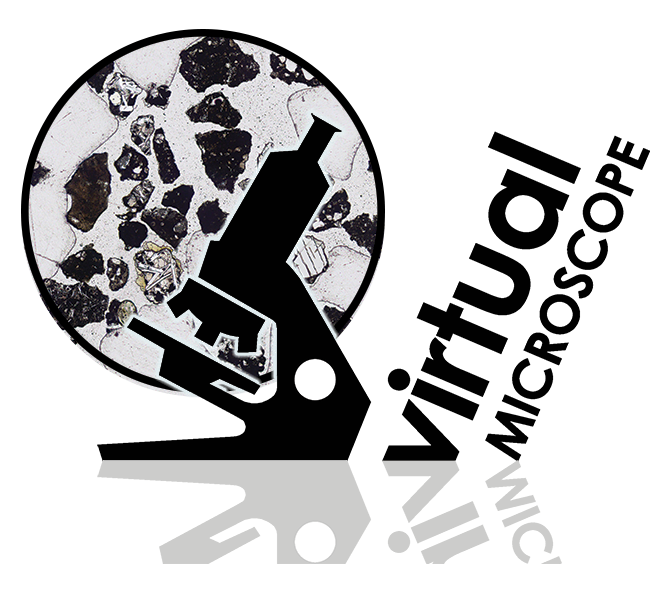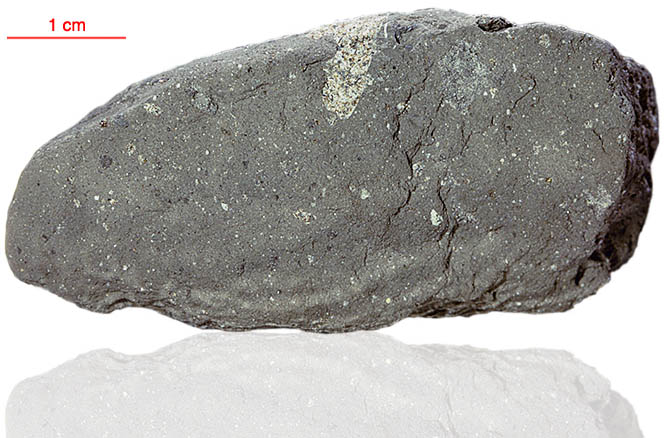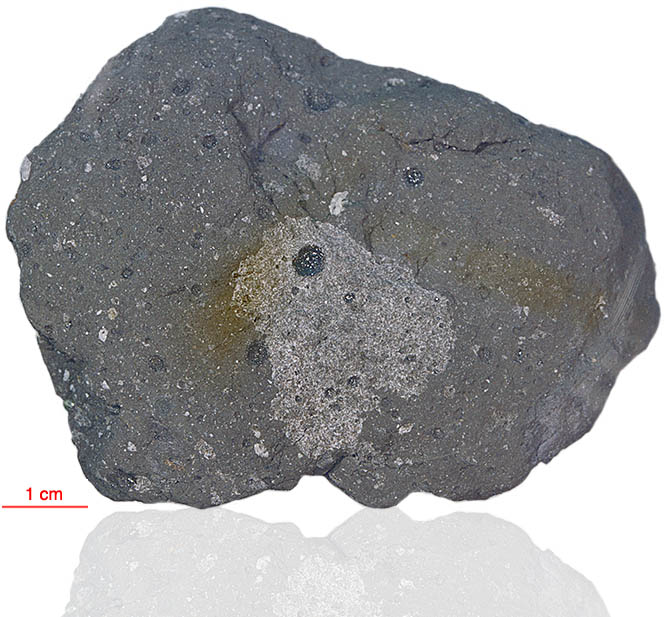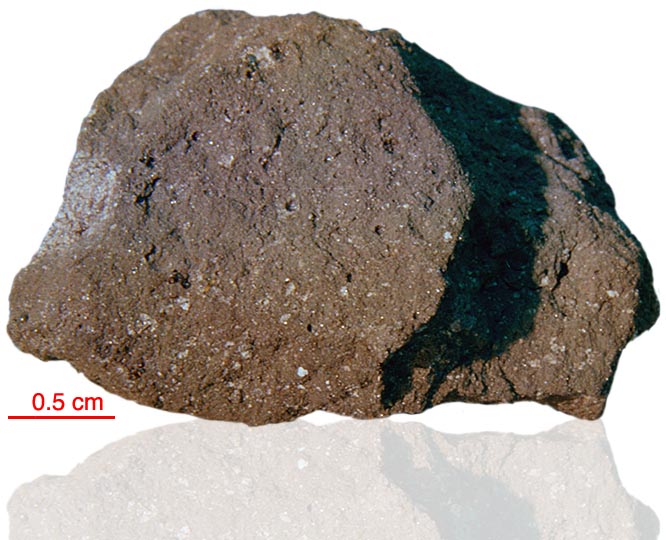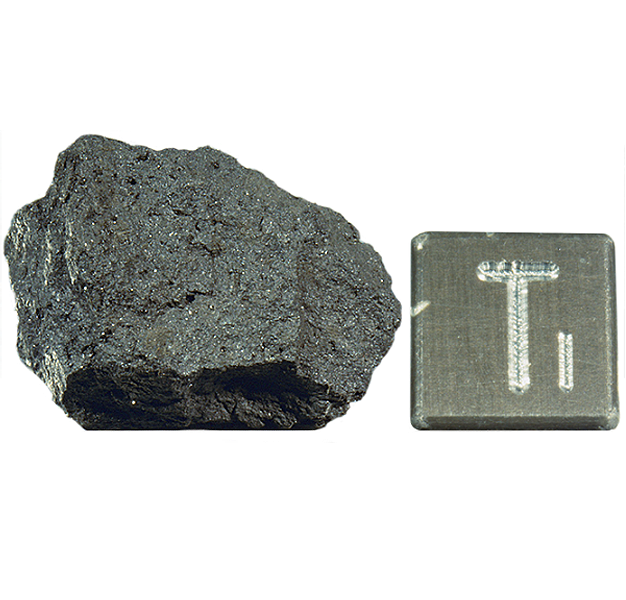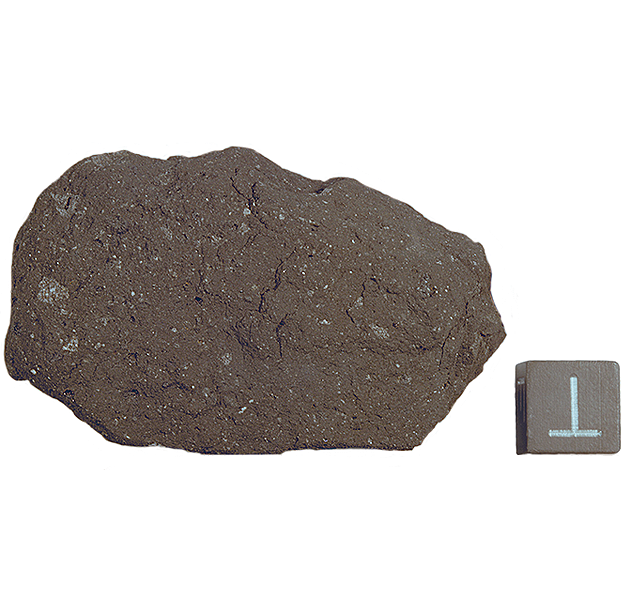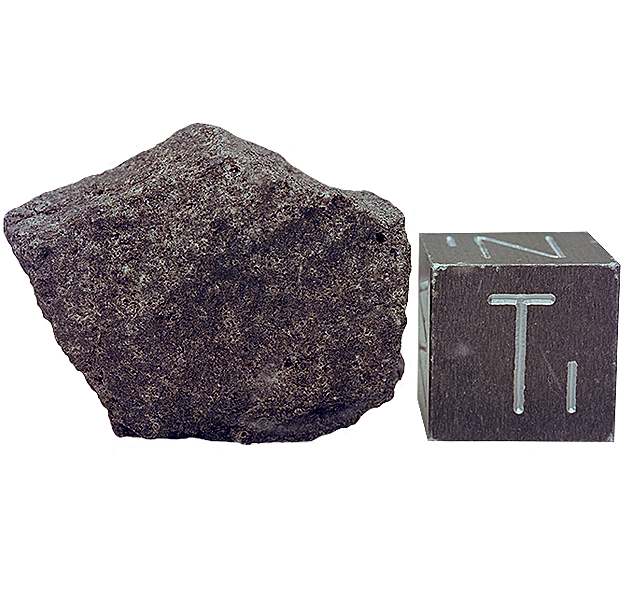
Fact sheet
10003 is one of the earliest samples collected during the Apollo missions. It is a medium-grained vuggy, ilmenite basalt. It weighed 213 grams before analysis and is 3.9 billion years old. The rock has an ophitic texture (larger pyroxene crystals enclose earlier-formed plagioclase feldspar). Apart from ilmenite, pyroxene and plagioclase feldspar, the sample contains small amounts of olivine, cristobalite, troilite (an iron sulphide), rutile, metallic iron and a K-rich glass. The sample also contains a feldspar-rich xenolith (see rotation 2).
Chemical analyses of the olivine and pyroxene crystals show large compositional variations from enstatite to ferrosilite and augite to pigeonite respectively.
Further details of this and other Apollo samples are here: http://curator.jsc.nasa.gov/lunar/
The Apollo 11 samples create an iconic collection since they were the first rocks collected by humankind that were returned to Earth from another solar system body. The Apollo 11 team collected and returned 22 kg of rock and soil samples.
Apollo 11 launched from Cape Kennedy on 16 July 1969. An estimated 530 million people watched Armstrong's televised image and heard his voice describe the event as he took "...one small step for a man, one giant leap for mankind" on 20 July 1969.

